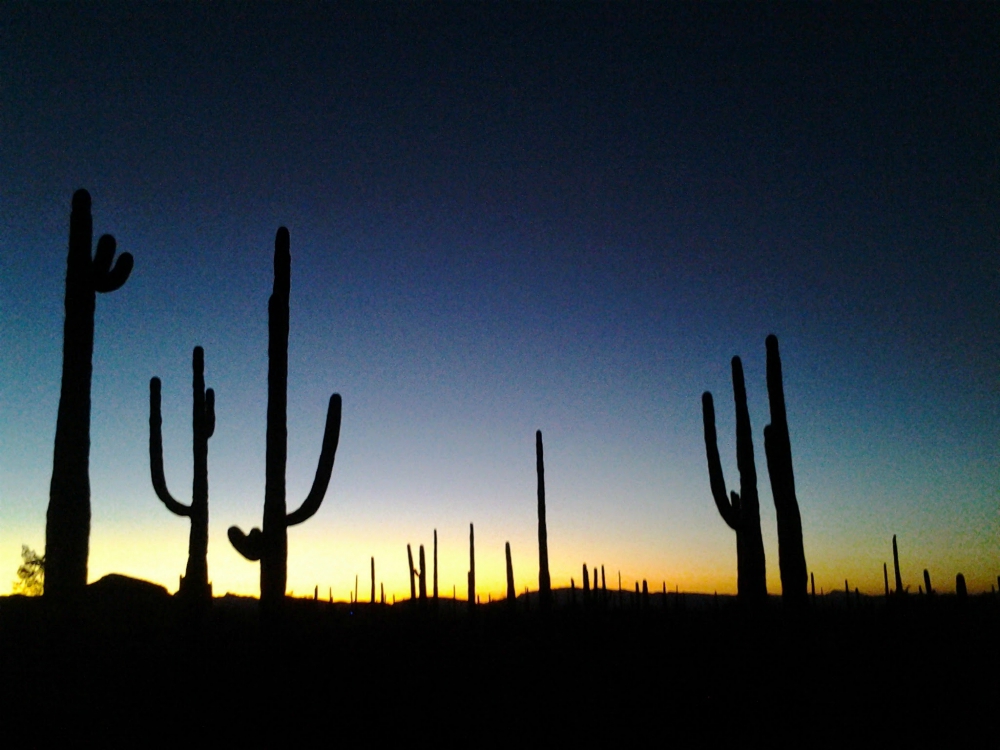
The interior of La Lomita Chapel in Mission, Texas (Wikimedia Commons/Andres Gonzalez)
More than ever in recent history, the religious liberties of American citizens have been in the news lately, from government-enforced church closures to Secretary of State Mike Pompeo's draft report of the Commission on Unalienable Rights. But from Texas to California, the faithful in Native American, Hispanic and Anglo-American border communities feel as though Homeland Security is running roughshod over their religious liberties and properties in its hell-bent attempt to finish border wall construction by November's election.
No matter that Pompeo pontificated on July 16 that religious freedoms and properties of American citizens and faith communities were foremost among all unalienable rights. Pompeo went so far as to claim that the U.S. serves as a powerful example to the rest of the world in the way our government heeds such rights for our diverse communities.
So let me take you to a "litmus test" of our government's commitment to protect the religious practices, places of worship and cultural properties of deep spiritual significance to the "three nations" in the U.S.-Mexico borderlands: Indigenous First Nations, Mexican and U.S. citizens with deep roots in this dry but divinely beautiful landscape.
At Quitobaquito Oasis in Organ Pipe Cactus National Monument on the Arizona-Sonora border, Jesuit Padre Eusebio Kino offered the first known Palm Sunday celebration in the region in 1698, using local palms and spring water for the blessings on that spring day.
Kino was likely aware that the place was already sacred to the Tohono O'odham, Hia-Ced O'odham and Quechan dwellers who had cemeteries, shrines and ceremonial grounds there. It is hard not to stand in reverence of the only pools of potable spring waters in any direction for 20 miles, especially in a cactus-studded landscape that receives less than 4 inches of rain in an average year.

Saguaros at sunset in the Organ Pipe Cactus National Monument (Wikimedia CommonsAtlas.Spheres)
The tall saguaro cactus that stood silent, perhaps absorbing Kino's prayers that spring morning, are considered "sacred persons" who give their fruit to the O'odham for fermenting a sacramental wine used in rain-bringing ceremonies.
The inextinguishable right to continue to harvest saguaro fruit for their ceremonies was granted to the O'odham more than two centuries later, when President Franklin Roosevelt declared part of the O'odham homelands Organ Pipe Cactus National Monument in 1937. Since that time, the Tohono and Hia-Ced O'odham, descendants of Kino's hosts, have continued their ceremonies at Quitobaquito — now recognized by the National Park Service as a traditional cultural property of the O'odham, even though it has been split in half by the borderline. Nevertheless, Border Patrol continued to let O'odham harvesters wander up and even across the border near Quitobaquito to obtain cactus fruit through the 1950s, recognizing their rights as a transborder tribe.
All this has changed in the last year, as Homeland Security's border wall construction director Paul Enriquez has claimed that an emergency proclamation by President Donald Trump authorizes him to waive more than 40 federal and state laws to maintain security at the border by building the monstrous 30-foot wall with 24/7 lighting atop it.
Not only is the wall being built within 20-30 yards of the sacred springs and oasis at Quitobaquito, but groundwater pumping from new wells needed to mix concrete and control dust are drying up the springs and killing seven species of ceremonial plants used in both Native American and Catholic rituals.
The Customs and Border Protection contractors have killed or mutilated thousands of highly protected and sacred saguaros along the borderline, and then allegedly attempted to sell their parts into the "black markets" in rural Arizona towns.
The wall also blocks an ancient holy pilgrimage route between the Valley of the Sun near Phoenix and sacred salt deposits along the shores of the Sea of Cortez that pilgrims continue to ritually run to this day, in much the same way that the Camino de Santiago in Europe has been used for centuries.
Advertisement
If it were only one spiritual tradition, one faithful culture, one sacred sanctuary being defiled at the border by Homeland Security, perhaps Enriquez could argue that this was an unfortunate but necessary diversion from the federal government's commitment to religious liberties.
But from the La Lomita Chapel in the Lower Rio Grande Valley of Texas, and the Ysleta del Sur Pueblo near the New Mexico-Texas border, to the Border Church worship in Friendship Park south of San Diego, Customs and Border Protection has shown wanton disregard for the religious liberties and properties that Pompeo claims should be given utmost respect.
The Healing the Border Project hosted by the Indigenous Alliance Without Borders has called for a Senate field hearing and for an intertribal and interfaith leaders meeting with Enriquez to halt and reverse border wall construction wherever the spiritual practices of Native American and Hispanic border dwellers have been disrupted.
All people of faith stand to lose if Homeland Security continues to pretend that it has exceptional authorization to violate religious liberties and destroy centuries-old sanctuaries of worship, whether indoors or out in the sacred wilderness.
[Gary Paul Nabhan is an Ecumenical Franciscan brother, a Wild Church Network leader, alumni of the Center for Action and Contemplation, and author of a forthcoming book from Fortress Press, Jesus for Farmers and Fishers. He has lived and worked on both sides of the U.S.-Mexico border in Indigenous communities for four decades.]






